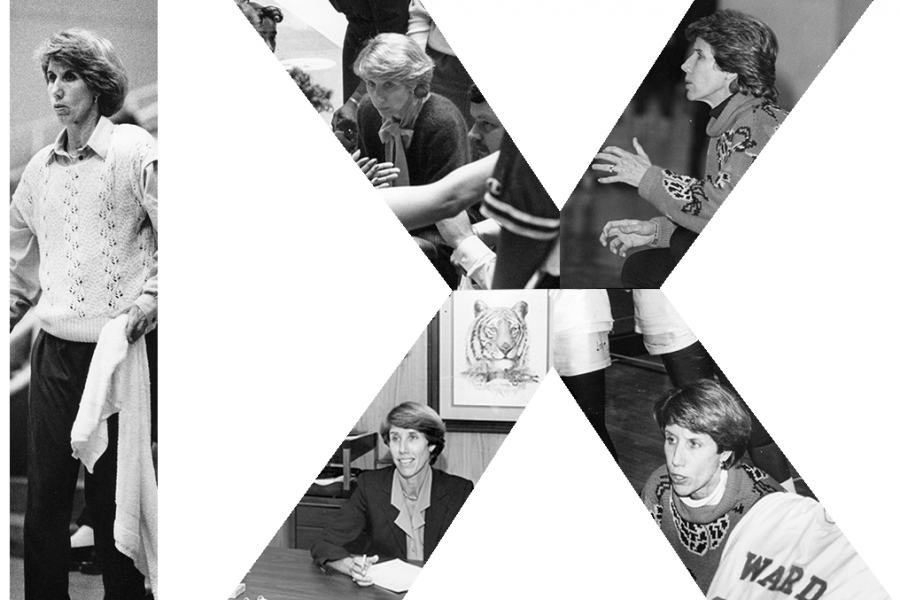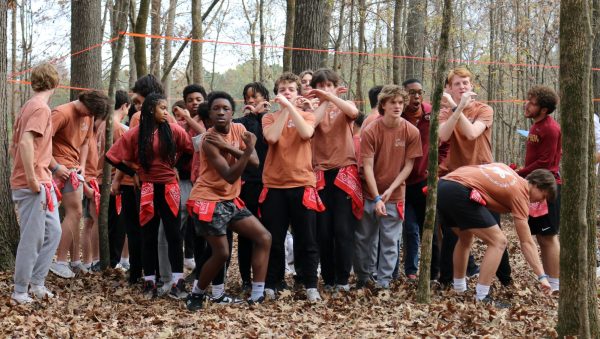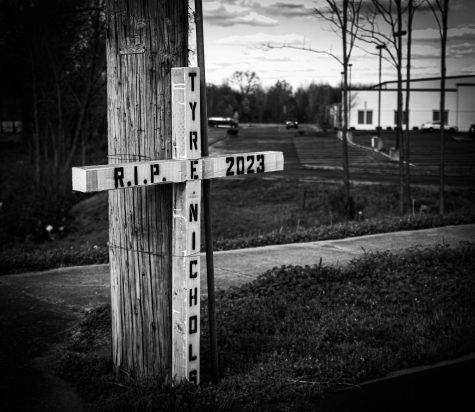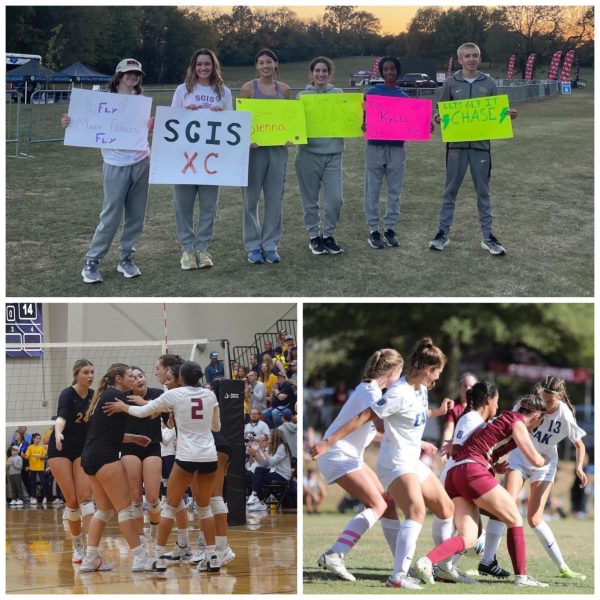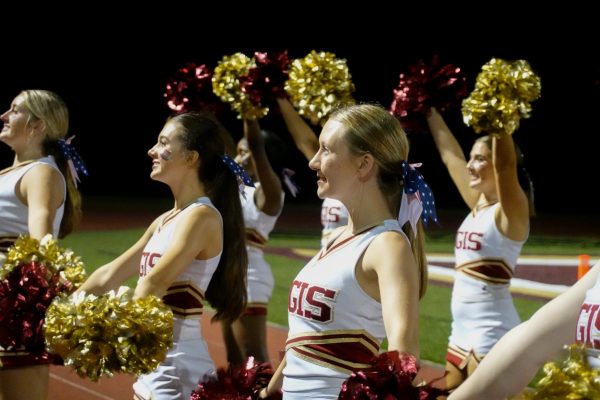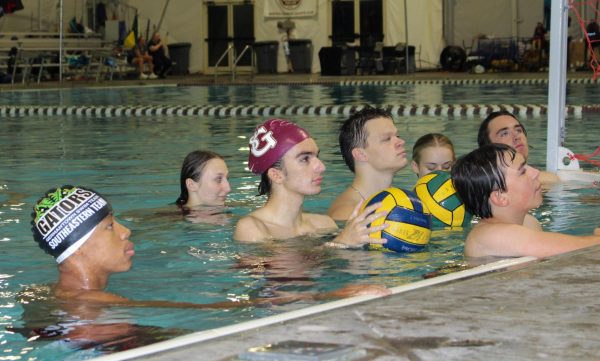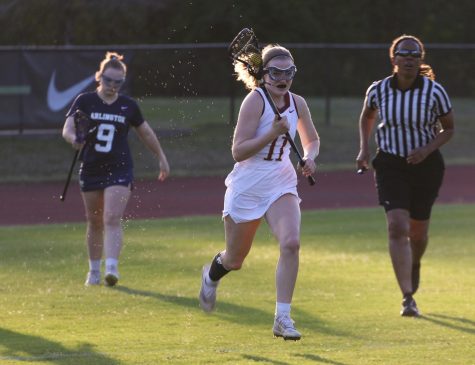Title IX
In the early days of the landmark equal rights legislation, Coach Mary Lou Johns was a champion for women’s athletics. Over the course of two decades as the first women’s basketball coach at Memphis State, she led the team to 377 victories and changed the face of Memphis sports.
The year is 1972, and Coach Mary Lou Johns is seeing red.
She is coaching the women’s basketball team at Memphis State (now the University of Memphis) and the lack of support for the team is obvious. The women ride in a van to away games, instead of flying like the men’s team does. The women practice in little side gyms that Coach Johns describes as tiny and cramped. The women have to fight the men’s teams for time on the court.
“She didn’t complain much, but at first, they didn’t have anything,” Mr. Jimmy Johns, Coach Johns’ husband, said.
That team was the first Memphis State women’s basketball team in its history, and it was a direct result of a new piece of legislation called Title IX. In 1972, Title IX, a federal civil rights law, was passed to prohibit sex discrimination in education, including sports programs.
The law was small, with only a 37-word introduction in general terms, and often overlooked by the public, but it was designed to serve as a catalyst to bring more academic and athletic opportunities to women by requiring equal treatment in school programs and activities. Instead of putting all their money into men’s academic and athletic programs, schools had to fund women’s programs, too. Schools that violated the law could lose their federal funding.
She didn’t complain much, but at first, they didn’t have anything.
— Mr. Jimmy Johns
After Title IX passed, schools like Memphis State scrambled to find coaches for the new women’s programs. When a position opened for a women’s basketball coach at Memphis State, Coach Johns, only 30 years old at the time, jumped at the chance.
“I didn’t have any competition. They were almost begging someone to do it,” Coach Johns said. “I basically learned on the job.”
She was given a small budget and six athletic scholarships, but she quickly realized that things wouldn’t be easy.
“We didn’t have a lot of money,” Coach Johns said. “We had some, but I remember we didn’t have money for a lot of fancy uniforms.”
The team took matters into their own hands and hosted a bake sale and car wash to raise money to buy their own uniforms. When they raised enough money, they didn’t choose the school’s colors of blue and gray, but red.
“I did it out of spite, really,” Coach Johns said. “After that year, they decided that they’d buy us some blue ones.”
Those blue uniforms were going to be a part of her life for the next 20 years, while Coach Johns brought the program to national prominence. She led the Lady Tigers to 15 winning seasons, three NCAA appearances and two Metro Conference championships, ultimately culminating in a career record of 377 wins and 231 losses. She still remains the team’s all-time winningest coach.
Though it’s hard to tell from her stats, Coach Johns, who now coaches both the seventh- and eighth-grade girls’ teams for St. George’s, actually didn’t have a lot of experience with basketball when she took the job at Memphis State. In fact, her high school didn’t even have a women’s basketball team.
“We played through club ball because it wasn’t sanctioned [at school],” she said. “Then when I went to college, it was pretty much the same thing. There wasn’t college basketball.”
In the late 1950s and early 1960s, when Coach Johns was in school, women’s basketball didn’t have the best reputation. The game was slow, with detailed rules to prevent women from acting “unwomanly.” Stealing the ball from an opponent, for example, was viewed as too rowdy and masculine for women and, thus, was banned.
Competition was even thought to be bad for women’s health until the 1960s, when the American Medical Association started to say otherwise. Afterwards, more women’s sports were half-heartedly started in progressive schools.
In college, Coach Johns played club basketball, tennis, volleyball and badminton, but the sport of basketball didn’t really capture her attention until she attended a Nashville convention.
At the hotel of the conference she was attending, tall players in letter jackets filled the lobby, and huge trophies were displayed nearby. A passerby told her that the TSSAA basketball state championship was being held in Nashville at Lipscomb University that weekend. On a free night, Coach Johns grabbed two friends and hopped in a taxi to go watch the state championship game.
“We went in the gym to see the girls’ game that day, and the gym was packed – seats, rafters, everywhere. We could hardly get a seat,” Coach Johns said. “I was just totally amazed at that many people coming to watch a girls’ basketball game.”
After graduation, she got her first job teaching health at Hillcrest High School in Memphis.
“They gave her two boys’ health classes when she was 21 years old,” Mr. Johns said. “There were about 45 boys in a class, and she had to be able to maintain disciple but hadn’t had years of experience. The boys were almost as tall as she was.”
While at Hillcrest, she decided to start a basketball team of her own. She still did not have any coaching experience, so she became a student of the game with the help of her husband, who was already a coach at a nearby high school.
“I’d go watch him [Mr. Johns] a lot. I’d watch games, but I’d mainly go to watch practices,” Coach Johns said. “But then it just really all fell in place. It was like somebody dropped a magical ball.”
That magical ball dropped when Coach Johns formed a Hillcrest volleyball and basketball team through a club program. Then, the magic happened again when Memphis State hired her to be head coach of the women’s basketball team.
It just really all fell in place. It was like somebody dropped a magical ball.
— Coach Mary Lou Johns
Her first season, she focused her recruiting on local women who were overlooked by the more prominent schools. During that first 1972-1973 season, the team finished with a 17-6 record, and the next season, the team got even better, earning a 23-9 record and the first 20-win season in the history of the Lady Tiger program.
Meanwhile, a national fight over Title IX was underway. Rules and conditions for Title IX had never been specified, so people were arguing at schools across the country about whether or not sports were included in its protection. The answer came in the form of a 1973 ruling from Mr. Caspar Weinberger, Secretary of Health, Education, and Welfare, who said that sports teams were covered under Title IX. The next year, Mr. Weinberger announced the proposed rules for the law, and more schools began adding women’s teams to their athletic programs.
“I didn’t really think much about it and didn’t know what was going to happen with women’s sports and Title IX,” Mr. Johns said. “[Title IX] was just extra work for her at first. Then after a year or so, she became a full-time coach. Then she got an assistant coach. Things happened quickly.”
During the 1974-1975 season, the Memphis State team improved to 29 wins. Two seasons later, from 1976-1977, the team was ranked among the top 20 teams nationally, barely losing to the eventual national champion, Delta State.
Though Coach Johns and her teams were successful and had the records to prove it, there were a lot of people who still weren’t too keen on the program.
“Most men’s coaches were opposed [to Title IX] because they thought it was going to take away from them,” Coach Johns said. “If you have a men’s basketball team, you have to have a women’s. So now, instead of having all the money going to them, you have to have something to counterbalance.”
The men’s teams stayed on the court longer than they were supposed to, cutting into the women’s time, or would not share certain supplies with the women’s team. The men’s team would have games in the Coliseum arena, with crowds of more than 10,000. The women’s team would occasionally play afterwards, but according to Coach Johns, three-quarters of the stadium would leave.
“I made a lot of enemies through the years with men because you had to be very aggressive and forceful,” Coach Johns said. “If you just sat back, the men would just step all over you – that’s just a fact. You always have some people who are opposed to women having a fair share.”
You always have some people who are opposed to women having a fair share.
— Coach Mary Lou Johns
Eventually, people started to have more respect for the women’s team and what they were trying to do.
“I think they realized we had to have certain things to exist, but it still left a bitter taste in some people’s mouths,” Coach Johns said. “As time went on, they’d come around to see how it is.”
By the end of the 70s, the women’s team had a booster club, a women’s chapter of the Fellowship of Christian Athletes and a Lady Tiger Athletic Council. With increasing support from the athletic department, the Memphis State women’s basketball program entered a new era.
WKNO-TV began televising some of their games. The team started to use airplanes to fly to away games. They hired an athletic trainer and full-time assistant coach. During the 1981-1982 season, the women advanced all the way to the Sweet 16 of the NCAA tournament. They even beat the Tennessee Volunteers, coached then by the late Coach Pat Summitt, who still holds the record as the all-time winningest coach in NCAA history – male or female.
Mrs. Ruth Ann Dix, a 5-foot-8-inch guard from Memphis, played under Coach Johns for all four years of college, from 1983 to 1987. Today, she serves as a middle school girls’ basketball coach at Briarcrest and coaches against Coach Johns.
“She’s still as intense as she ever was,” Mrs. Dix said.
That’s the word Mrs. Dix uses to describe Coach Johns: intense. Mrs. Dix remembers Coach Johns’ coming straight from her own workouts to lead practice with the team, and those practices were as intense as Coach Johns was. The team practiced a lot, and when they didn’t play well during a game, they practiced even harder.
“I can remember coming back from a road trip where we didn’t play very well, and we went straight to the gym and ran,” Mrs. Dix said. “I remember our having to get off the bus and go straight to the gym a few times.”
But the work was not in vain, because over Mrs. Dix’s four years, the team had two appearances in the NCAA tournament. They were either champion or runner-up of the Metro-Conference for three of her four years. The team even ranked in the national top 20 a couple of times.
“Looking back now, because I’m a coach, I understand a little bit more about why she was so competitive and pushed us so hard because that’s what it takes at that level,” Mrs. Dix said. “She personifies a very tough person, but she has a heart for her players.”
Coach Johns won Memphis’ Coach of the Year three times before finally being replaced by Ms. Joye Lee-McNelis in 1991.
Her years at Memphis State bring back mostly fond memories: the trips to places like Aruba and Alaska, the moments of fleeting joy in a victory, the camaraderie with other coaches and close relationships with her players.
“I don’t know what I would’ve done if I hadn’t coached,” she said. “All because of a little round object that you bounce around and shoot in a hoop.”
As women’s sports continue to gain more equal opportunities and momentum, Coach Johns and her Lady Tigers have a lasting legacy, serving as examples of women who fought to better their circumstances.
“The girls now, college players and high school players, don’t realize that it didn’t use to be this way. It’s like when Billie Jean King [a famous female tennis player] said, ‘Baby, we’ve come a long way,’” Coach Johns said. “Yes, baby, we have come a long way.”


